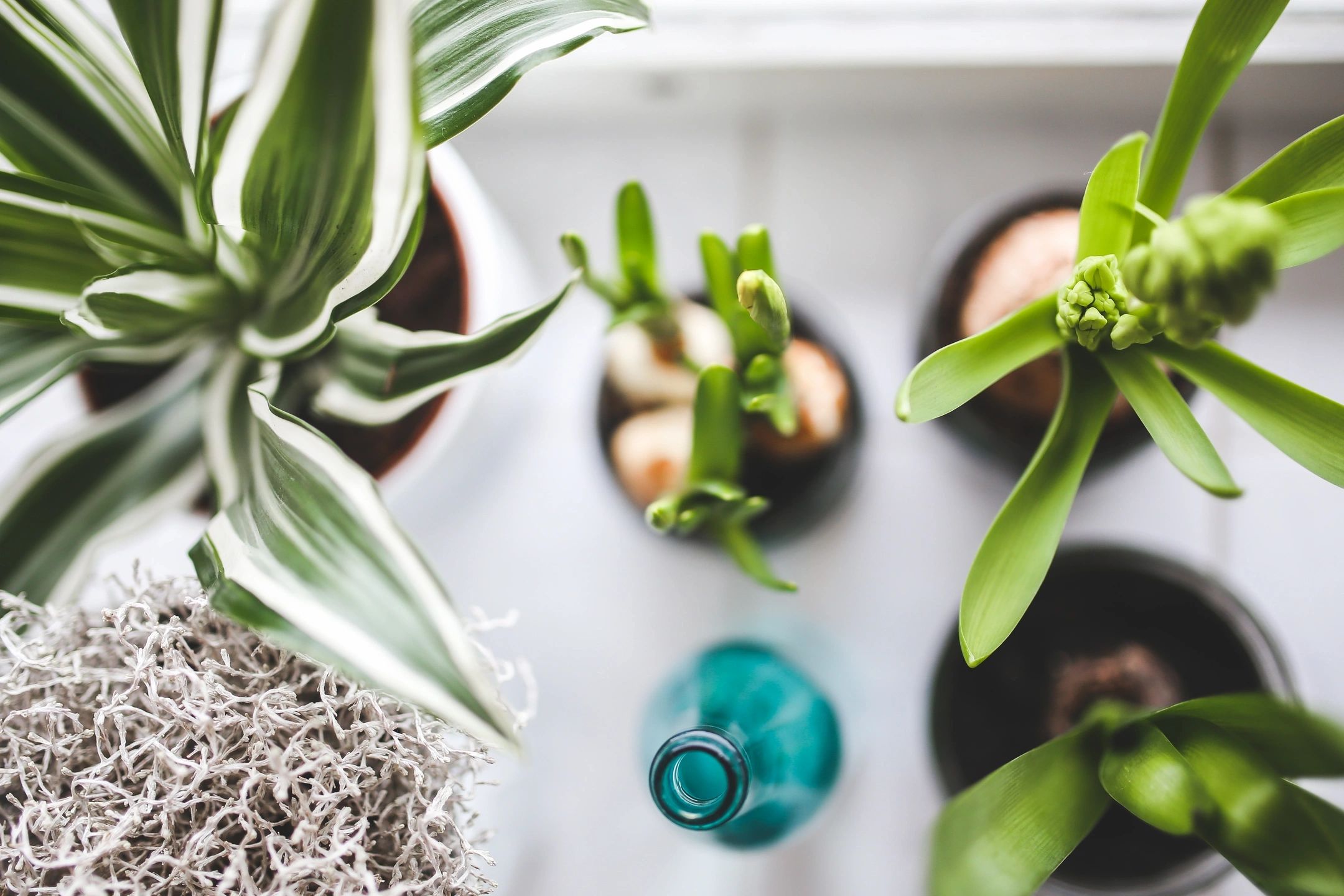Indoor plants not only add a touch of nature to your living space but also offer a myriad of benefits, ranging from purifying the air to reducing stress levels. As more people seek to bring the outdoors in, the popularity of indoor gardening continues to grow. In this article, we’ll explore the best indoor plants to spruce up your home, catering to various preferences, skill levels, and living conditions.
Factors to Consider Before Choosing Indoor Plants
Lighting conditions
Lighting conditions play a crucial role in determining which indoor plants thrive in your home. While some plants prefer bright, indirect sunlight, others can tolerate low light conditions.
Space availability
Space availability is another key consideration. Whether you have ample floor space or limited countertop space, there are indoor plants suitable for every corner of your home.
Maintenance requirements
Maintenance requirements vary from plant to plant. Some species are low-maintenance, requiring minimal care, while others need regular watering, pruning, and fertilizing.
Allergies and Toxicity
Considering allergies and toxicity is essential, especially if you have pets or young children at home. Opting for non-toxic plants ensures a safe environment for everyone.
Top 5 Indoor Plants for Beginners
Snake Plant (Sansevieria trifasciata)
Snake plants are virtually indestructible, making them perfect for beginners. They thrive in low light conditions and can tolerate irregular watering.
Peace Lily (Spathiphyllum)
Peace lilies are renowned for their air-purifying properties and elegant white flowers. They prefer moderate to low light and consistently moist soil.
Spider Plant (Chlorophytum comosum)
Spider plants are easy to care for and produce cascading foliage, adding visual interest to any room. They thrive in bright, indirect light and well-draining soil.
Pothos (Epipremnum aureum)
Pothos plants are versatile and can adapt to various lighting conditions. Their trailing vines make them ideal for hanging baskets or placed on high shelves.
ZZ Plant (Zamioculcas zamiifolia)
ZZ plants are resilient and can tolerate neglect, making them perfect for forgetful gardeners. They thrive in low light and require infrequent watering.
Best Indoor Plants for Low Light Conditions
Philodendron Philodendrons
Philodendron Philodendrons come in a variety of shapes and sizes, making them versatile for any indoor space. They prefer indirect light and moderate watering.
Cast Iron Plant (Aspidistra elatior)
Cast iron plants are incredibly hardy and can survive in almost any lighting conditions, including low light. They have glossy, dark green leaves that add a touch of elegance to any room.
Chinese Evergreen (Aglaonema)
Chinese evergreens are known for their striking foliage patterns and adaptability to low light environments. They require minimal maintenance and can thrive even in dimly lit corners.
Indoor Plants That Purify the Air
Aloe Vera (Aloe barbadensis)
Aloe vera not only soothes skin irritations but also removes toxins like formaldehyde from the air. It prefers bright, indirect light and infrequent watering.
English Ivy (Hedera helix)
English ivy is a versatile climber that effectively removes airborne mold and other allergens. It thrives in bright, indirect light and prefers evenly moist soil.
Rubber Plant (Ficus elastica)
Rubber plants are excellent air purifiers and can grow into impressive trees if given the right conditions. They prefer bright, indirect light and regular watering.
Indoor Plants for Small Spaces
Air Plants (Tillandsia)
Air plants are epiphytes that don’t require soil to grow, making them perfect for small spaces. They absorb moisture and nutrients through their leaves and thrive in bright, indirect light.
Dwarf Varieties of Plants
Opting for dwarf varieties of popular plants allows you to enjoy greenery without taking up much space. Miniature succulents, ferns, and palms are excellent choices for compact areas.
Hanging Plants
Hanging plants utilize vertical space and add visual interest to any room. They can be suspended from ceilings or mounted on walls, making them ideal for small apartments or offices.
Pet-Friendly Indoor Plants
Boston Fern (Nephrolepis exaltata)
Boston ferns are safe for pets and help improve air quality by removing pollutants like formaldehyde and xylene. They require high humidity and indirect light to thrive.
Parlor Palm (Chamaedorea elegans)
Parlor palms are non-toxic to pets and add a tropical touch to any room. They prefer bright, indirect light and consistent moisture.
Areca Palm (Dypsis lutescens)
Areca palms are safe for pets and act as natural humidifiers, making them ideal for dry indoor environments. They require bright, indirect light and regular watering.
Indoor Plants for Aromatherapy
Lavender (Lavandula)
Lavender not only fills your home with a delightful fragrance but also promotes relaxation and stress relief. It thrives in bright, sunny windowsills and well-draining soil.
Rosemary (Rosmarinus officinalis)
Rosemary emits a refreshing scent and is known for its culinary uses. It prefers full sunlight and well-drained soil, making it ideal for kitchen windowsills.
Jasmine (Jasminum)
Jasmine produces sweetly scented flowers that perfume the air and promote restful sleep. It requires bright, indirect light and regular pruning to maintain its shape.
Decorative Indoor Plants
Orchids
Orchids are prized for their exotic beauty and elegant blooms. With proper care, they can bloom for several months, adding a touch of luxury to any room.
Bromeliads
Bromeliads come in a variety of colors and patterns, making them popular decorative plants. They prefer bright, indirect light and occasional misting to thrive.
Anthurium
Anthuriums are known for their glossy, heart-shaped leaves and vibrant flowers. They prefer bright, indirect light and consistently moist soil to bloom prolifically.
Edible Indoor Plants
Herbs (Basil, Parsley, Mint)
Growing herbs indoors allows you to have fresh flavors at your fingertips year-round. They prefer bright, indirect light and well-drained soil.
Cherry Tomato Plant (Solanum lycopersicum)
Cherry tomato plants can be grown indoors in containers, providing a bountiful harvest of sweet, juicy tomatoes. They require ample sunlight and regular watering.
Dwarf Citrus Trees
Dwarf citrus trees, such as lemons, limes, and oranges, can be grown indoors with proper care. They need bright, direct sunlight and consistent watering to produce fruit.
Uncommon Indoor Plants for Enthusiasts
Monstera Deliciosa
Monstera deliciosa, also known as the Swiss cheese plant, features iconic perforated leaves and adds a tropical vibe to any space. It prefers bright, indirect light and regular watering.
String of Pearls (Senecio rowleyanus)
String of pearls is a unique trailing succulent with spherical leaves that resemble tiny beads. It thrives in bright, indirect light and well-draining soil.
Bird of Paradise (Strelitzia)
Bird of paradise plants showcase striking foliage and vibrant flowers reminiscent of tropical birds. They prefer bright, indirect light and regular fertilization to bloom.
Indoor Plants That Require Minimal Maintenance
Succulents
Succulents are drought-tolerant plants that store water in their leaves, making them ideal for forgetful gardeners. They thrive in bright, indirect light and well-draining soil.
Cacti
Cacti are resilient plants that require minimal water and care. They come in various shapes and sizes, adding a touch of desert charm to any room.
ZZ Plant (Zamioculcas zamiifolia)
ZZ plants are virtually indestructible and can thrive in low light conditions with infrequent watering. They have glossy, dark green foliage that adds a touch of elegance to any space.
Tips for Caring for Ing frequency based on plant type, soil moisture, and environmental conditions.
Pruning and grooming: Remove dead or yellowing leaves, promote new growth, and maintain plant shape.
Pest control: Monitor plants for signs of pests like aphids, spider mites, and mealybugs, and treat infestations promptly.
Fertilizing: Use a balanced fertilizer according to plant needs to promote healthy growth and blooming.
Creative Ways to Display Indoor Plants
Hanging planters: Utilize ceiling space to showcase trailing plants and create a cascading effect.
Terrariums: Create miniature ecosystems with glass containers, rocks, soil, and small plants like succulents and air plants.
Macrame plant hangers: Add a bohemian touch to your decor with handmade macrame plant hangers, showcasing your favorite plants in style.
Common Mistakes to Avoid When Growing Indoor Plants
Overwatering: Allow soil to dry out between waterings to prevent root rot and fungal diseases.
Ignoring signs of distress: Monitor plants for wilting, yellowing leaves, and pest infestations, addressing issues promptly.
Choosing the wrong plant for the space: Consider lighting, humidity, and space requirements before selecting indoor plants to ensure their long-term health and vitality.
Benefits of Having Indoor Plants in Different Rooms
Living room: Indoor plants add warmth, texture, and color to living spaces, creating a welcoming atmosphere for family and guests.
Bedroom: Certain plants, like lavender and jasmine, promote relaxation and improve sleep quality, enhancing your bedroom oasis.
Kitchen: Herbs and edible plants grown in the kitchen provide fresh flavors for cooking and elevate culinary experiences.
Bathroom: Moisture-loving plants thrive in bathrooms, purifying the air and adding a spa-like ambiance to your daily routine.
Trending Indoor Plants for Modern Homes
Fiddle Leaf Fig (Ficus lyrata)
Fiddle leaf figs are prized for their large, glossy leaves and sculptural presence, making them a favorite among interior designers.
Monstera Deliciosa
Monstera deliciosa’s iconic split leaves and tropical appeal have made it a staple in modern interiors, adding a touch of jungle chic to any room.
String of Pearls (Senecio rowleyanus)
String of pearls’ unique trailing habit and spherical leaves have captured the hearts of plant enthusiasts, making it a trendy choice for contemporary decor.
Incorporating Indoor Plants into Interior Design
Adding color and texture
Indoor plants introduce vibrant hues and varied textures, complementing existing decor and adding visual interest to any room.
Creating focal points
Strategically placing large or unusual plants creates focal points that draw the eye and anchor the space, enhancing the overall aesthetic.
Enhancing air quality
Indoor plants act as natural air purifiers, removing harmful pollutants and toxins while releasing oxygen, creating a healthier indoor environment.
Sustainable Practices in Indoor Gardening
Using eco-friendly pots and containers
Opt for sustainable materials like clay, bamboo, or recycled plastic when selecting pots and containers for your indoor plants.
Recycling and repurposing materials
Get creative with upcycled containers, such as old jars, cans, or teacups, to add character to your indoor garden while reducing waste.
Composting organic waste
Use compost bins or vermicomposting systems to recycle organic plant waste into nutrient-rich soil amendments, closing the loop on indoor gardening sustainability.
Indoor plants are not only decorative accents but also essential elements of a healthy and harmonious home environment. From air-purifying wonders to edible delights, there’s a perfect plant for every space and lifestyle. By incorporating indoor plants into your home, you can enjoy the numerous benefits they offer while adding beauty and vitality to your surroundings. Start your indoor gardening journey today and experience the transformative power of greenery firsthand.
Please like, comment, and share this article if you found it helpful and
informative.
Visit https://bigtownbulletin.com if you would like to see more of this content.
Please like, comment, and share this article if you found it helpful and
informative.
For more news check out Big Town Bulletin News
For more from Big Town Bulletin check out Big Town Bulletin


